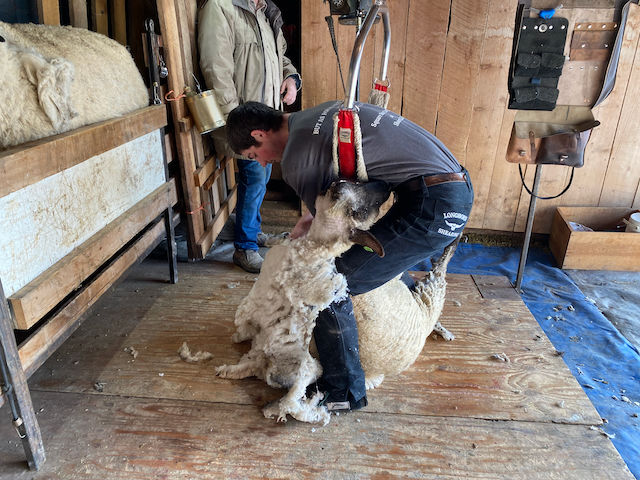LAMBING - Sleepless nights!
- Maureen Hoggan
- Aug 19, 2024
- 4 min read
Lambing season is a jam-packed time that pulls you in every direction. The ewes are sheared a month before lambing begins for cleanliness and to reduce the possibility of a lamb being laid on. As the due date approaches, it's time to prepare all the necessary medicines and supplies. The ewes are noticeably larger each day, their swollen udders fill with milk ready to greet the soon-to-be-born lambs. We stay close to home as we approach the due date, always on alert as a lamb could arrive a couple of days early.

In the past, we used to lamb in early February to sell lambs that would be big enough to market for 4-H and large enough to breed at the end of the summer. As we've gotten older, we changed our operation to lambing in April, to market our ram lambs for late fall breeding or hold them over until the next year to sell as yearlings. This made it easier on ourselves by not lambing in the coldest part of the winter.

During the day we can observe the
sheep through our kitchen window overlooking the lambing pen towards the barn on the north side of our house. At night we check every 3 or 4 hours depending on the weather. If it's really cold and blizzarding we take turns getting out of our warm bed and going out every hour. Our eyes heavy with exhaustion, adjust to the kitchen light as we bundle up in coats, slip on muck boots, and strap on headlamps for a closer look. Stepping out the back door, we head toward the barn, where the lambing takes place. We walk among the ewes first looking for newborn lambs and checking their swollen, uncomfortable bodies, looking for any signs of labor—water bags, or anything that might signal complications. It’s a routine that we are used to after all these years of lambing.
There’s nothing quite like the moment when a ewe brings new life into the world. The tiny lambs arrive and almost immediately start bleating—a sound that fills the barn like a nursery. They stumble around with a bit of awkwardness. It's amazing how fast they make their way to their mother’s udder, searching for that first drink of milk. Once they latch on, you feel the relief, knowing they’ve found their lifeline. But it’s not always that simple. There are tough moments, too, like when a lamb is coming out backward, two coming at once, or a large lamb the ewe can’t deliver on her own. Those are the times when you are there to help and do the best you can. At times the lamb dies and this is where you grab an extra lamb you have on hand from a triplet or twin from an ewe that didn't have enough milk to graft onto that grieving ewe and give her a chance to mother a lamb she’s so ready to care for. From then on, the lambs are monitored closely, not only for signs of malnutrition but also for respiratory issues or scours (diaherra) that shots or
oral medicine usually take care of that one. The new family is put into a small pen to bond, from there into a smaller corral for a week, then out into the big world.
Lambing season has its funny moments—well, funny to everyone but me. Unless a ewe has big teats, I just can’t seem to milk her very well. After each lamb is born, we usually squeeze the teats that might be plugged to release the colostrum (the mother's first milk is filled with nutrition) making it easier for the lambs to nurse. At times you get a ewe with so much milk she could feed the whole corral. That's when I step in, milking her for extra colostrum to freeze for later if needed. But when it comes to those ewes with smaller teats, I’m hopeless—I’d be there for an hour and barely get a drop. That’s where Mike comes in. He has a real knack for it, and after 32 years of practicing, he better be good at it! With that extra milk from that ewe, we save that liquid gold in ice cube trays for later when we need that extra colostrum. This can be tubed directly to the stomach of newborns.


A life-saving moment during lambing is when a lamb is born weak, and we have to tube it with the mother’s colostrum or some we have frozen. It's like giving that lamb an adrenaline rush—it’s incredible to watch. Usually, that’s all it takes to get them off to a good start. Within minutes, you can see the difference—the once weak lamb starts to perk up as if the "liquid gold" brings them back to life.
The joy of seeing those lambs thrive keeps you going, reminding you that this hard, messy, beautiful work is worth every minute. It is the miracle of life. Within a couple of days, the lambs are jumping and running. A sight that makes all those cold sleep-deprived nights easily forgotten.


Comments